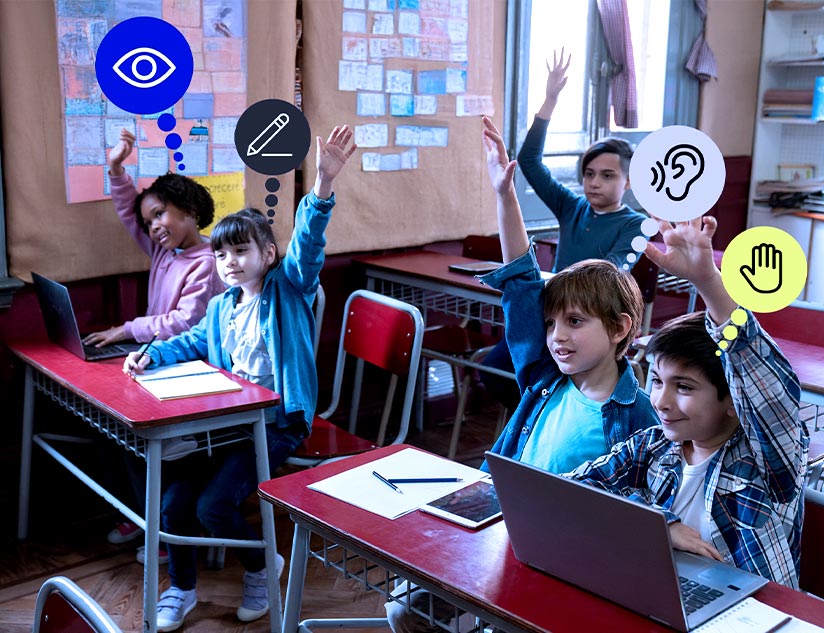Why K-12 Education Publishers Need to Embrace Interactive Content Distribution Platforms in 2024
Learners, especially those in the K-12 education segment, have been raised in hyper-simulated environments, and grabbing and retaining their attention is beyond the capabilities of static content. Interactive learning keeps them engaged while encouraging them to develop critical thinking and analytical reasoning skills through open-ended questions, imaginative learning pathways involving decision-making, and collaboration opportunities. This helps inspire learners and keep teacher-student relationships at the center of academic achievement.
Moreover, active learning opportunities have improved pass rates by enhancing students’ cognitive attention.
The Shortcomings of Static Content
The limitations of static content formats, such as textbooks and text-only eBooks, increasingly motivate educators to opt for interactive content distribution. Some of these limitations include:
Passive Learning
With static content, learners become passive recipients of information and do not get any opportunity to experience explorative and active learning. It’s easy to get bored and let your attention wander with such learning experiences.
Engagement
Static content makes it difficult to capture and retain the attention of tech-savvy learners in an increasingly digitized world. They constantly need entertainment and interaction, which static content fails to provide.
Outdated Information
In an ever-changing world, where knowledge and learning goals constantly evolve, static content becomes outdated quickly and difficult to update.
Harness the Power of Interactive Content
Interactive learning offers educators a hands-on approach to disseminating knowledge relatable to the real world. Content that includes life-like simulations, gamification, and personalized tasks offers active learning opportunities.
Interactive digital learning addresses all the shortcomings of static content, such as:
Boosting Engagement
Interactive elements elicit actions from students to make them active participants in the learning process as the module progresses. Unpredictable formats and surprise elements of interactive learning keep students alert and engaged.
Enhancing Retention
Active learning as a form of “doing” enhances higher-order thinking skills (HOTS) through active problem-solving and peer-learning opportunities. It prevents learners from getting overwhelmed by continuous information inflow without having time to reiterate or apply the knowledge and assimilate it.
Ensuring Relevance
Interactive content remains relevant in the long run. Open-ended questions and AI-powered smart learning systems dynamically create new learning paths and automate content updates to ensure the dissemination of the right knowledge and skills.
Interactive Content Distribution Platforms: A Game Changer
Interactive content distribution platforms (ICDPs) are equipped with intelligent content augmentation and management capabilities to enable educators to create active learning opportunities. Education publishers and institutions that adopt ICDPs can optimize resource utilization, accelerate learning material creation, and automate learning paths based on real-time user data. ICDPs also offer multiple other benefits.
- These tools facilitate seamless interaction among publishers, educators, and learners, offering collaboration opportunities to create relevant and targeted learning materials.
- ICDPs help teachers use the split-attention effect. This means they can mix different learning styles in one lesson.
- Various content formats and learning techniques foster greater flexibility in learning pathways that meet learners’ individual requirements.
- ICDPs are equipped with analytical tools that offer data-driven insights, facilitating informed content improvement and accommodating varied learning styles.
Overcoming Challenges to Embrace the Future
Embracing interactive content platforms is essential for meeting the needs of today’s learners. But for publishers and education folks, there are some significant challenges. These include converting legacy content into modern interactive formats, adjusting learning workflows, upgrading assessments and feedback, and the cost implications of integrating cutting-edge technologies with traditional learning management systems.
Transitioning to ICDPs
Strategic transition planning can overcome the above challenges. A great way to proceed is to adopt a phased transition, which involves gradually moving to ICDPs. This ensures that the transition is tested and validated incrementally, reducing rework and giving insights into required enhancements with minimal downtime. However, this requires expertise, technology, and training educational practitioners to optimally leverage the platform’s benefits.
One effective way to manage the transition is by having educational institutions team up with tech experts. For this, they must form strategic partnerships and leverage the expertise of experienced technology providers.
Prepare for the Future of Education
To stay relevant and maintain a competitive edge, K-12 publishers must adopt interactive content distribution platforms through expert guidance from a leading technology provider. Delivering engaging learning experiences that enable learning assimilation and skill development while offering hands-on application opportunities is key to grabbing the attention of the digital-native generations. Speak to the experts at MagicBox to offer differentiated interactive learning experiences that bolster adoption and multiply revenue streams.















